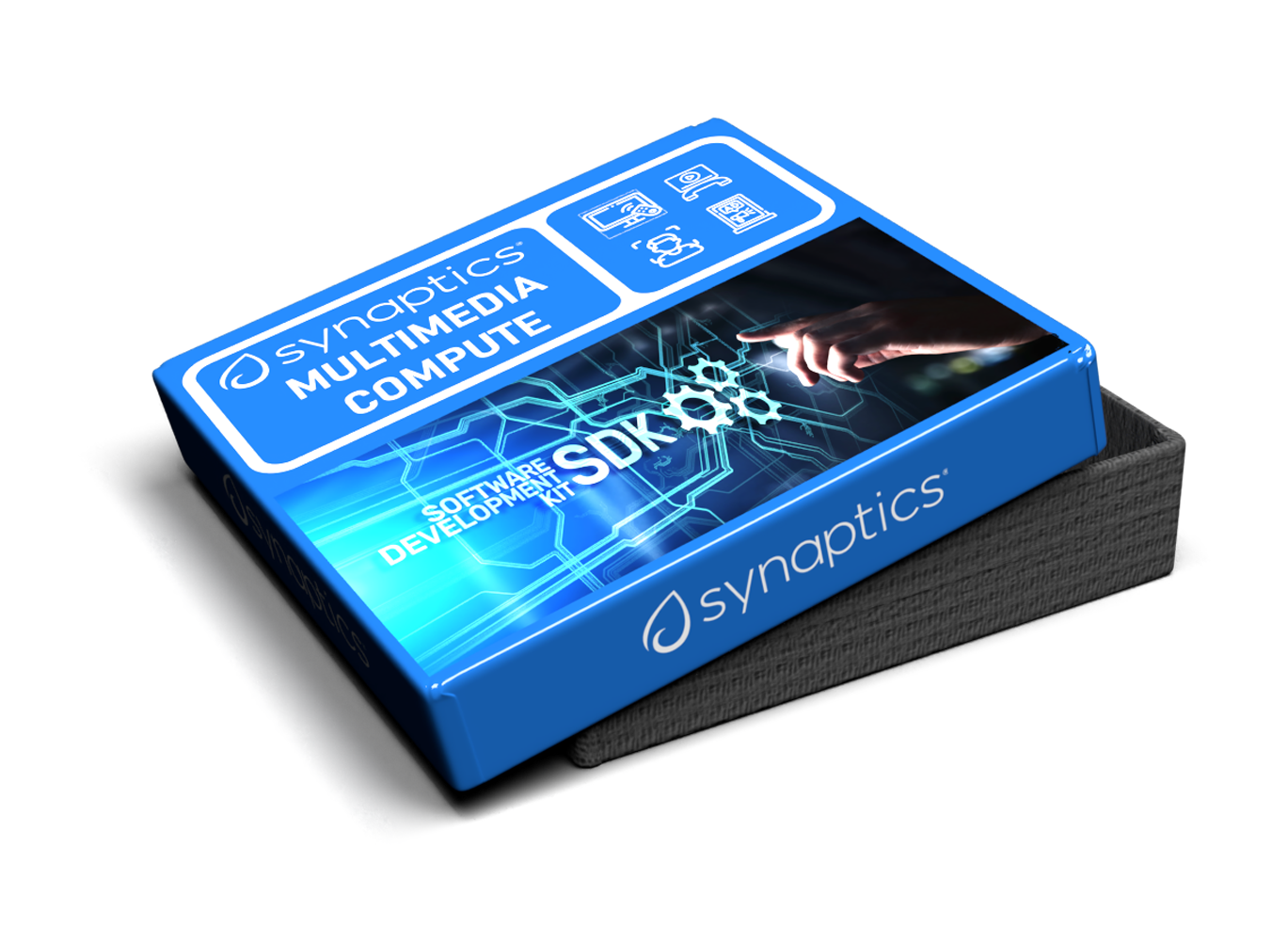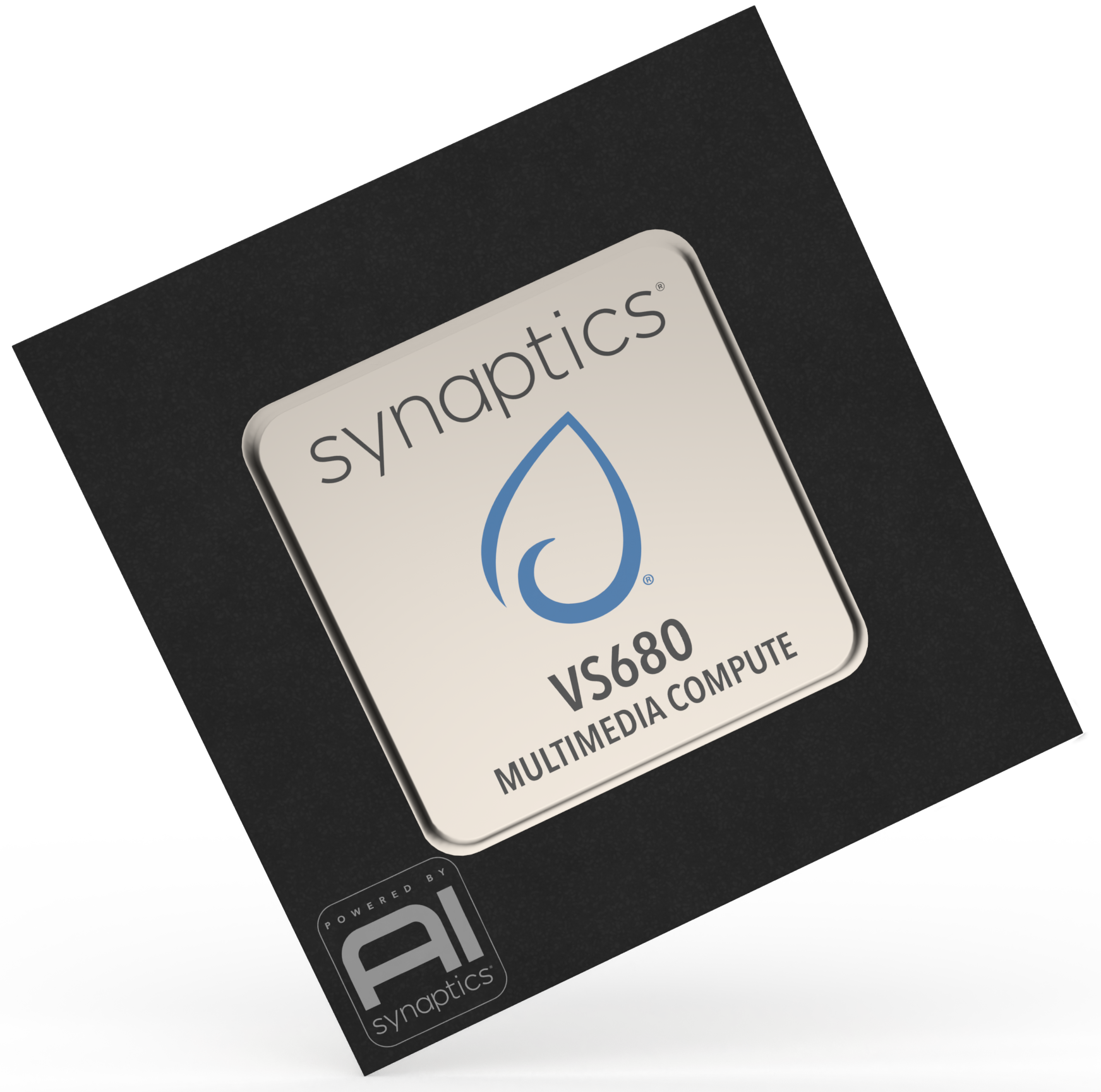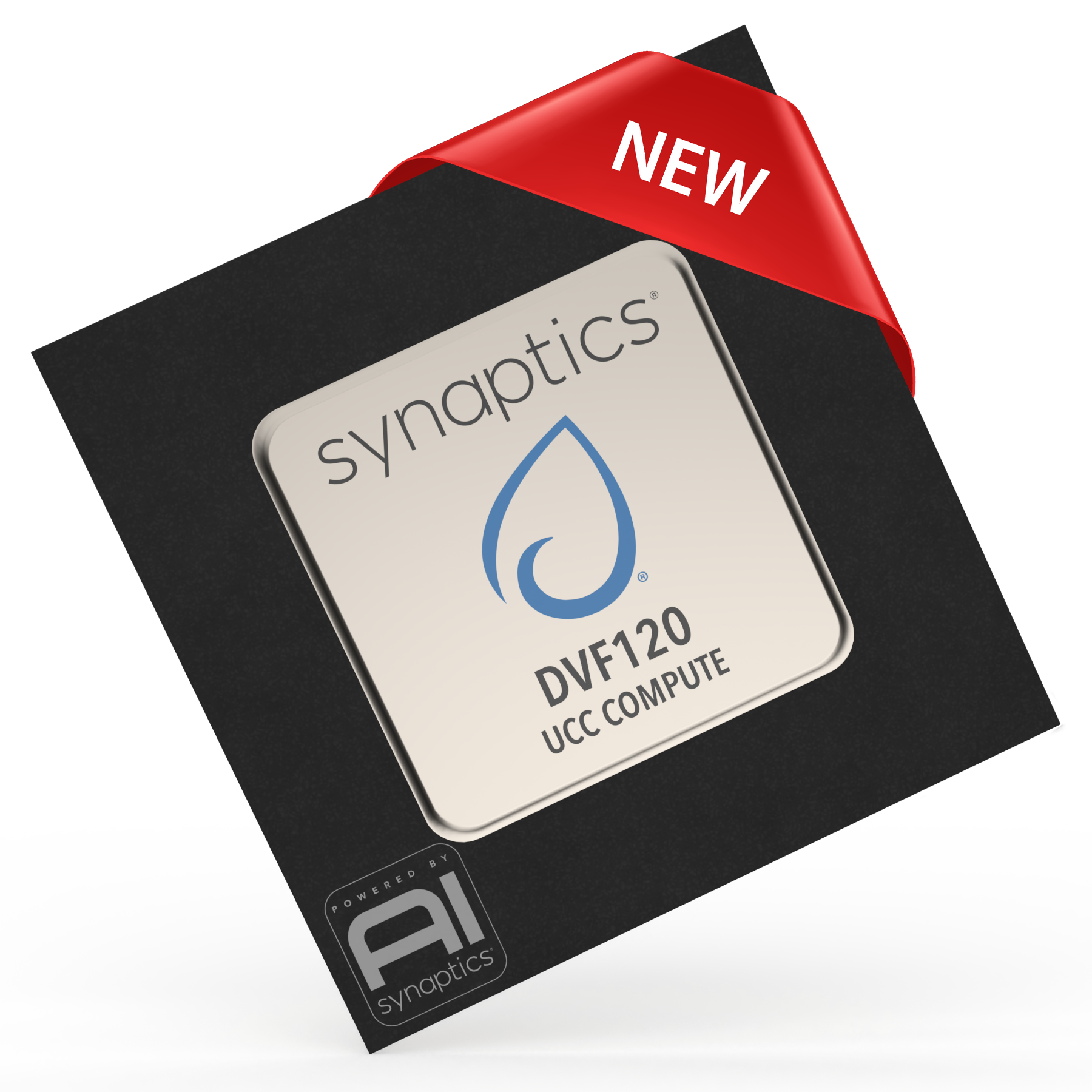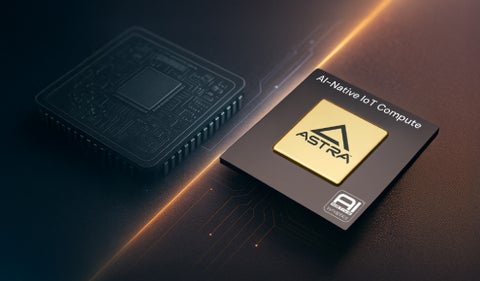Trust Synaptics to deliver AI-integrated, advanced, embedded multimedia processors engineered to process multiple media types in real time.
Highly Customized Multimedia Compute Solutions
Leverage a family of AI-enabled, energy-conscious, system-optimized, cost-efficient and highly secure embedded multimedia processors with proven Linux and Android SDKs that reduce time to market and development costs.
COMPUTE
High performance SoCs with integrated CPU, GPU, NPU, DSP engines
VIDEO
Multistream, 4K support with Dolby Vision®, HDR 10+®, and HLG
VISION
Integrated image signal processor supports dual 4K cameras
AUDIO & VOICE
Super wideband audio, acoustic echo cancellation, Dolby Atmos®
AI
Unified secure inferencing framework enables rapid deployment
SOFTWARE
Field-proven market-ready SDK across silicon portfolio
POWER OPTIMIZED
Performance per watt benefits enabling fan-less designs
Unified Communication and Collaboration Solutions
Smart Streamers, Signage
& Operator Solutions
Differentiation Through AI & ML
The Synaptics AI toolkit simplifies model deployment to the edge device with partners such as Visidon, Nex, ID R&D, and BCOM.





Powering the World's Leading Operators and Enterprises






















Synaptics at IBC 2023
We recorded this introduction to AI-enabled video processors and connectivity products for the set-top box industry at IBC 2023.
Driving Market Growth and Differentiation
Synaptics multimedia compute solutions equip you to stand out from competitors with smarter, more-capable, more-appealing products that support real-time facial recognition, accurate gesture control, super-resolution video upscaling and other advanced multimedia use cases.
INTERACTIVE SIGNAGE
UPSCALING
SMART PEOPLE COUNTING
INTELLIGENT FACIAL RECOGNITION
SMART FRAMING
Customized Reference Board and SDK
EVALUATION KIT

Contact us today to discuss the availability of our reference board and SDK.
TAILORED SDK

Combined With Synaptics Connectivity for Highly Integrated Solutions
We combine our AI multimedia solutions with best-in-class wireless connectivity technology, empowering you to provide seamless, real-time experiences. With our connectivity capabilities, you:
- • Match the right class of connectivity to your multimedia compute needs
- • Leverage seamless interoperability supported by optimized, field-proven software for reliable connections across devices
- • Access the latest wireless technology and future-proof your edge devices
- • Build edge devices that enable real-time streaming, sharing and receiving of multimedia
- • Enable flexible scaling of devices in diverse environments, such as home, office and public spaces
- • Accelerate time to market by combining compute and connectivity in a single solution
Pair With Synaptics Video Interface Solutions for Enhanced Workplace Experiences

Utilize market-leading DisplayLink chipsets and Video Interface ICs to enable next-generation hybrid workspaces. Our innovations empower you to deliver products that support flexible workspace configurations, multiple monitors and plug-and-play connectivity. Whether it's for a meeting, collaboration or presentation, your employees will enjoy more productive, engaging sessions.

Contact Us for More Information on Our AI Multimedia Solutions
When it comes to embedded technology, Synaptics stands out as a premier brand committed to streamlining your development process. With extensive AI, ML and design expertise, we empower OEMs and ODMs to develop products with greater flexibility and efficiency.
We'd love to hear about your multimedia computing needs. Reach out to us and we'll connect you with a suitable solution.
Get in Touch and Learn More












